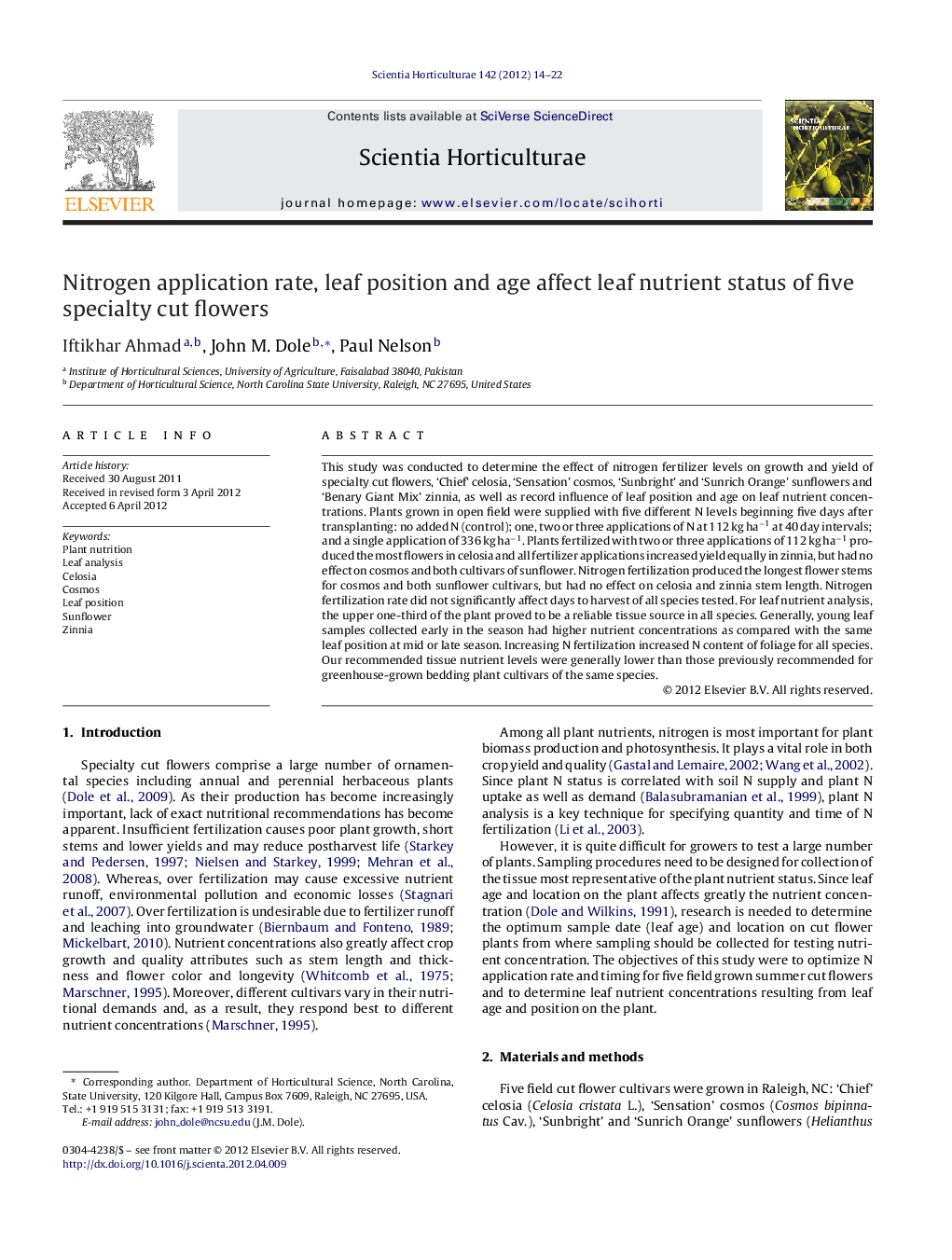| Article ID | Journal | Published Year | Pages | File Type |
|---|---|---|---|---|
| 4567540 | Scientia Horticulturae | 2012 | 9 Pages |
This study was conducted to determine the effect of nitrogen fertilizer levels on growth and yield of specialty cut flowers, ‘Chief’ celosia, ‘Sensation’ cosmos, ‘Sunbright’ and ‘Sunrich Orange’ sunflowers and ‘Benary Giant Mix’ zinnia, as well as record influence of leaf position and age on leaf nutrient concentrations. Plants grown in open field were supplied with five different N levels beginning five days after transplanting: no added N (control); one, two or three applications of N at 112 kg ha−1 at 40 day intervals; and a single application of 336 kg ha−1. Plants fertilized with two or three applications of 112 kg ha−1 produced the most flowers in celosia and all fertilizer applications increased yield equally in zinnia, but had no effect on cosmos and both cultivars of sunflower. Nitrogen fertilization produced the longest flower stems for cosmos and both sunflower cultivars, but had no effect on celosia and zinnia stem length. Nitrogen fertilization rate did not significantly affect days to harvest of all species tested. For leaf nutrient analysis, the upper one-third of the plant proved to be a reliable tissue source in all species. Generally, young leaf samples collected early in the season had higher nutrient concentrations as compared with the same leaf position at mid or late season. Increasing N fertilization increased N content of foliage for all species. Our recommended tissue nutrient levels were generally lower than those previously recommended for greenhouse-grown bedding plant cultivars of the same species.
► All fertilizer applications increased yield in zinnia, only split ones in celosia, but had no effect on cosmos and sunflower. ► N fertilization produced the longest flower stems for cosmos and both sunflowers, but had no effect on celosia and zinnia. ► Leaf position, tissue harvest date and fertilization rate affected tissue nutrient levels for all five cut flowers. ► Our recommended tissue nutrient levels were generally lower than previously recommended for greenhouse-grown same plants.
